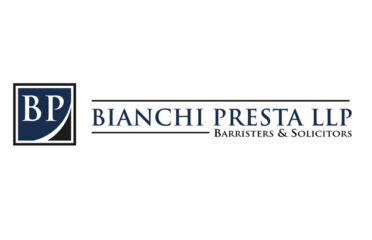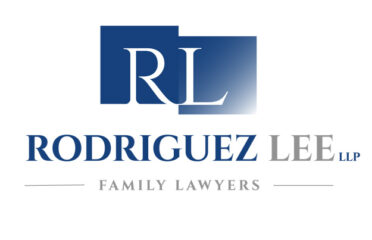What is Mediation & Arbitration Law in Canada?
In an era where court backlogs routinely stretch into years, mediation and arbitration have become essential tools for resolving disputes efficiently across Canada. These alternative dispute resolution (ADR) methods now handle everything from multi-million dollar commercial conflicts to family law matters and workplace grievances. This 1,000-word guide explores how mediation and arbitration function under Canadian law, their legal frameworks, key differences, and practical considerations for businesses and individuals.
1. ADR in Canada: An Overview
Canada’s justice system actively promotes mediation and arbitration to:
-
Reduce strain on overburdened courts (Ontario’s civil case backlog exceeds 200,000)
-
Lower costs (typically 40-70% cheaper than litigation)
-
Preserve relationships through collaborative solutions
-
Maintain privacy (unlike public court proceedings)
Statutory Foundation: All provinces have adopted the Uniform Mediation Act and Uniform Arbitration Act with local variations.
2. Mediation in Canadian Law
A. What is Mediation?
A voluntary, confidential process where a neutral third-party facilitates negotiation between disputing parties to reach a mutually acceptable resolution.
Key Characteristics:
-
Non-binding unless settlement reached
-
Party-controlled outcomes
-
Typically 1-3 sessions
-
75-85% success rate in mandatory mediation programs
B. Legal Framework
-
Ontario’s Mandatory Mediation Program: Required for most civil cases in Toronto/Ottawa
-
Family Law: Most provinces mandate mediation before court (except in domestic violence cases)
-
Commercial Contracts: Increasingly include mediation clauses
Case Example: Hryniak v. Mauldin (2014 SCC) – Landmark ruling emphasizing mediation’s role in access to justice.
C. The Mediation Process
-
Agreement to Mediate: Sets ground rules
-
Opening Statements: Parties present perspectives
-
Private Caucuses: Mediator shuttles between sides
-
Settlement Drafting: If agreement reached
Costs: $3,000-$15,000 (vs. $50,000+ for comparable litigation)
3. Arbitration in Canadian Law
A. What is Arbitration?
A private adjudication where parties present evidence to a neutral arbitrator whose decision is legally binding.
Key Characteristics:
-
Binding outcomes (enforceable like court judgments)
-
Procedural flexibility
-
Limited appeals
-
Used in 90%+ of commercial contracts
B. Legal Framework
-
Provincial Acts: Govern domestic arbitration (e.g., BC’s Arbitration Act)
-
Federal: Commercial Arbitration Act implements international treaties
-
New York Convention: Enforces foreign arbitral awards in Canada
Enforcement: Arbitral awards can be filed with provincial Superior Courts.
C. Types of Arbitration
-
Commercial (contract disputes)
-
Labour (union grievances)
-
Construction (delay/defect claims)
-
Investor-State (under treaties like CUSMA)
Case Example: Uber v. Heller (2020 SCC) – Invalidated unfair arbitration clauses in adhesion contracts.
D. The Arbitration Process
-
Notice of Arbitration: Initiates proceedings
-
Arbitrator Selection: Parties jointly choose neutral
-
Preliminary Meeting: Sets procedural rules
-
Hearings: Similar to trials but less formal
-
Award: Issued within timelines (often 3-6 months)
Costs: $25,000-$250,000 (vs. $100,000-$1M+ for comparable litigation)
4. Key Differences Between Mediation & Arbitration
| Factor | Mediation | Arbitration |
|---|---|---|
| Decision Maker | Parties | Arbitrator |
| Binding? | No (unless settled) | Yes |
| Appeals | N/A | Extremely limited |
| Confidentiality | Absolute | Usually protected |
| Speed | Days/Weeks | Months |
| Cost | $$ | $$$ |
| Success Rate | ~80% | 100% (produces decision) |
5. Hybrid Models in Canadian Practice
A. Med-Arb
-
Begins as mediation
-
Unresolved issues shift to arbitration
-
Popular in labour and construction disputes
B. Arb-Med
-
Arbitrator renders (sealed) decision
-
Parties then mediate with decision as leverage
-
Used in family law property disputes
Provincial Variance: Quebec prohibits same-neutral med-arb under its Code of Civil Procedure.
6. Enforcing ADR Agreements
A. Contract Clauses
Well-drafted ADR provisions should specify:
-
Process (mediation/arbitration)
-
Governing rules (e.g., ADR Institute of Canada)
-
Location/venue
-
Cost allocation
B. Court Enforcement
-
Stay of Proceedings: Courts will pause litigation if valid arbitration agreement exists (Uber v. Heller exception)
-
Mediation Compliance: Failure to mediate may lead to cost penalties
7. Recent Developments (2023-2024)
A. Virtual ADR Expansion
-
Permanent adoption of online platforms post-pandemic
-
Challenge: Ensuring procedural fairness remotely
B. ESG Disputes
-
Climate-related arbitration under trade agreements
-
Mediation of Indigenous consultation conflicts
C. Consumer Protection
-
Ontario’s Consumer Protection Act reforms limiting arbitration clauses
-
BC’s proposed ban on arbitration for sexual harassment claims
D. AI Integration
-
Algorithmic mediation tools (e.g., Settly)
-
AI-assisted document review in complex arbitrations
8. Provincial Spotlight
A. Ontario
-
Most active ADR jurisdiction
-
Mandatory mediation for civil/family cases
-
Arbitration Act, 1991 governs proceedings
B. Quebec
-
Civil law tradition influences procedures
-
Strong judicial oversight of arbitral fairness
C. Alberta
-
Innovative summary arbitration rules
-
Leading energy sector arbitration hub
9. When to Choose ADR Over Litigation
Consider Mediation When:
-
Preserving relationships matters (e.g., business partners)
-
Creative solutions are needed
-
Quick resolution is prioritized
Consider Arbitration When:
-
Expertise in technical matters is required
-
Privacy is essential
-
Cross-border enforcement may be needed
Avoid ADR When:
-
Precedent-setting is required
-
One party refuses to participate in good faith
-
Interim court orders (e.g., injunctions) are needed
10. Selecting a Neutral: Key Criteria
For mediators:
-
Subject-matter expertise
-
Transformative vs evaluative style
-
Cultural competency
For arbitrators:
-
Relevant legal/technical background
-
Availability/timeliness record
-
Rate structure (hourly vs. capped)
Professional Bodies:
-
ADR Institute of Canada (ADRIC)
-
Provincial law society rosters
-
International Chamber of Commerce
11. Cost Considerations
A. Mediation Fees
-
$300-$800/hour for experienced mediators
-
Often split equally between parties
B. Arbitration Costs
-
Arbitrator fees: $500-$1,500/hour
-
Institutional fees (e.g., ICC administrative costs)
-
Party expenses (experts, venue)
Cost-Saving Tip: Some provinces offer subsidized family mediation.
12. Case Study: TELUS v. Wellman (2019 SCC)
This landmark ruling:
-
Upheld class action waiver in arbitration clauses
-
Confirmed arbitral primacy in commercial disputes
-
Sparked legislative reforms in Ontario/BC
13. The Future of ADR in Canada
Emerging trends include:
-
Online dispute resolution (ODR) platforms (e.g., BC Civil Resolution Tribunal)
-
Specialized environmental dispute resolution centers
-
Indigenous dispute resolution models gaining recognition
-
Blockchain arbitration for digital asset conflicts
Conclusion
Mediation and arbitration have evolved from alternatives to the default dispute resolution mechanisms for many Canadian legal conflicts. With courts increasingly mandating ADR attempts before trials and businesses demanding efficient processes, these methods now resolve hundreds of thousands of disputes annually outside traditional litigation channels.
As former Supreme Court Justice Rosalie Abella observed: “The measure of a justice system’s health is not how many cases it processes, but how fairly and efficiently it resolves them.” Canada’s robust ADR framework continues demonstrating that justice need not always wear a judicial robe – sometimes, the most equitable solutions emerge through collaborative problem-solving rather than adversarial combat.






















